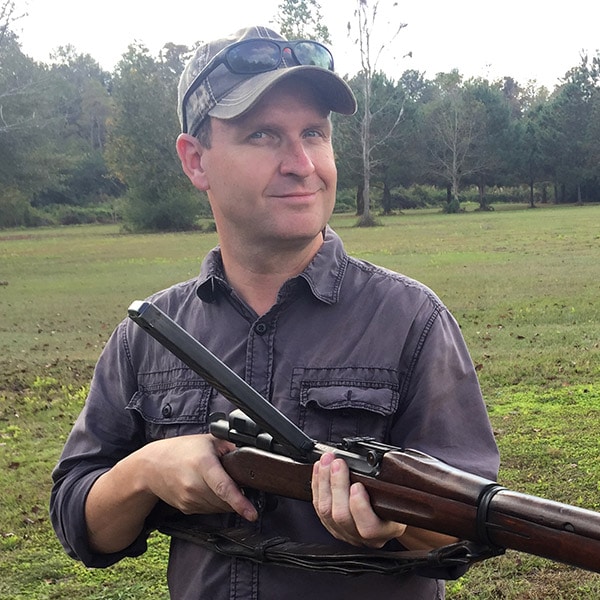Are American-Made RPG-7s in Ukraine Taking Down Russian Tanks?
March 17th, 2022
7 minute read
The ironies of contemporary world history are many and sometimes profound. Recently, complicated politics in post-Soviet Eastern Europe dragged a number of towering ironies before the eyes of the world during the Russian invasion of Ukraine. One of these ironies is the fact that many of the weapons being used by both sides were created during the Cold War by the now-dead U.S.S.R. empire — an empire whose geography Russia now seems to be attempting to reacquire.
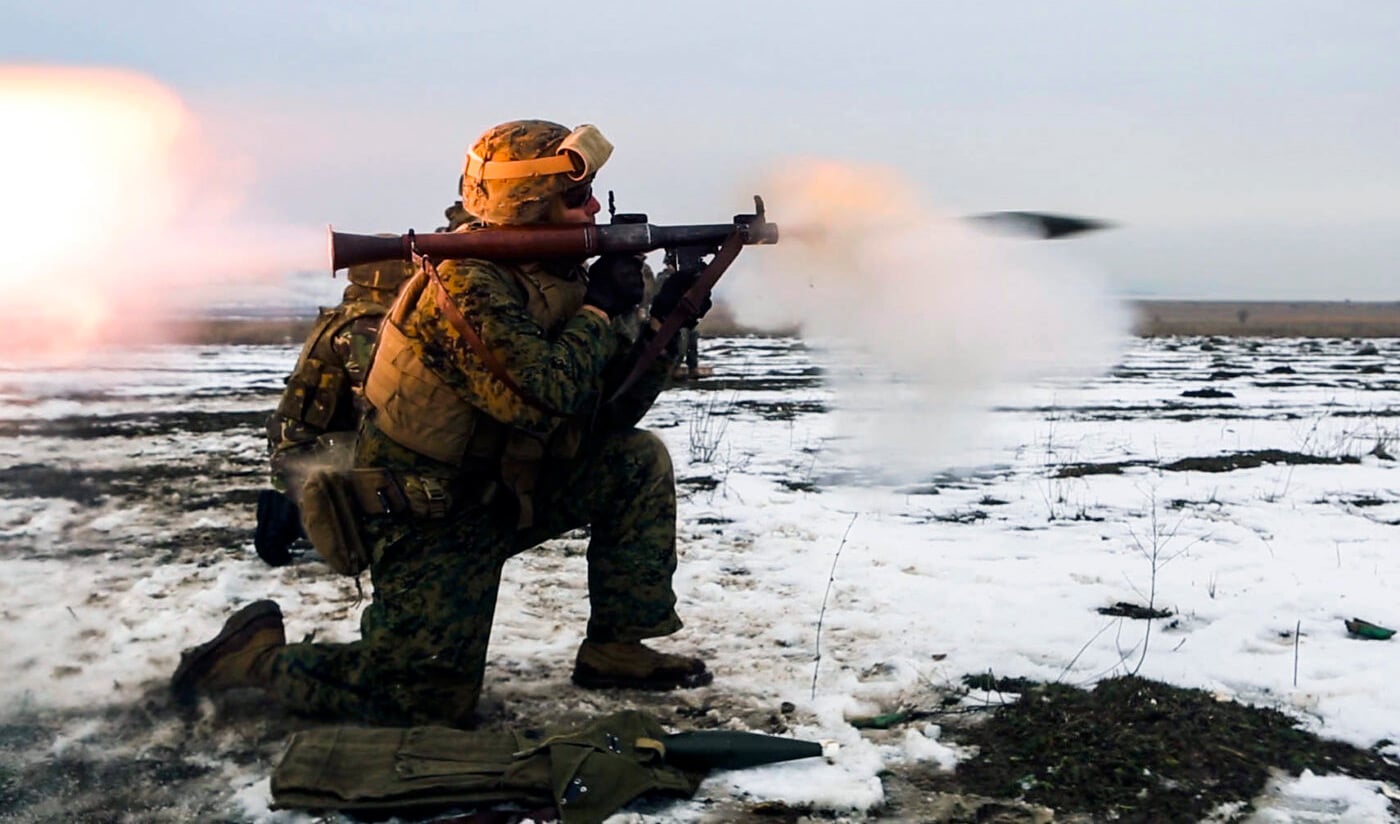
For example, contemporary derivatives of the Kalashnikov assault rifle can be seen in the streets of Kherson, Mariupol and Kyiv, and even the humble Makarov pistol has been used in limited numbers. But another old 20th-century Soviet weapon is fighting-on here in the 21st with a renewed importance: the RPG-7 recoilless, shoulder-fired, rocket-assisted grenade launcher.
The Source
During the Second World War, the Red Army learned a valuable lesson from the Germans about individually portable anti-tank firepower. Both the Panzerfaust and the Panzerschreck had demonstrated themselves to be formidable battle implements and the Russians sought to develop something similar.
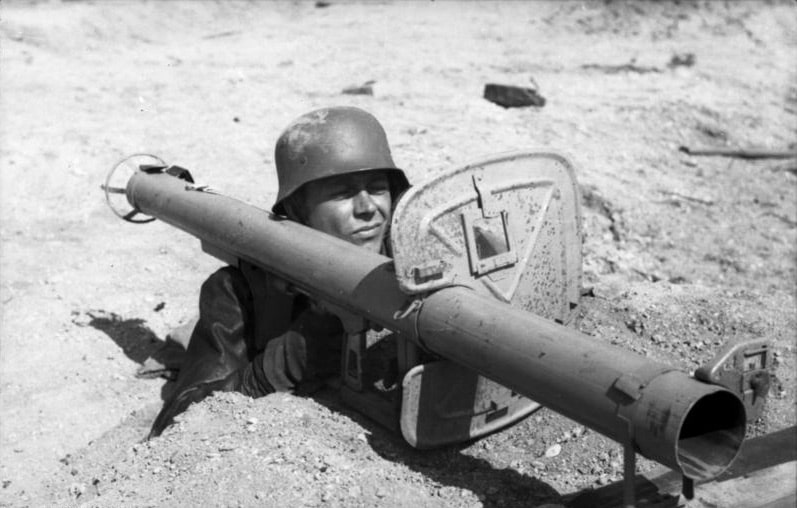
By late 1944, they had a design that combined the lightweight portability of the Panzerfaust and the reloadability of the Panzerschreck with a shaped charge warhead that ultimately received the designation PG-1. After the end of the Great Patriotic War, development of the weapon — now designated RPG-1 (for Ручной противотанковый гранатомёт, Ruchnoy Protivotankovy Granatomyot or “hand-held antitank grenade launcher”) — continued because of difficulties with the launcher’s ignition system and the projectile’s disappointing armor penetration.
By 1947, though, an improved design was taking shape that overcame the RPG-1’s shortcomings. It was designated RPG-2 in 1949 and it used a 40mm diameter cartridge to accelerate an 82mm diameter high-explosive/anti-tank (HEAT) warhead out to a maximum range of 150m/500 feet.
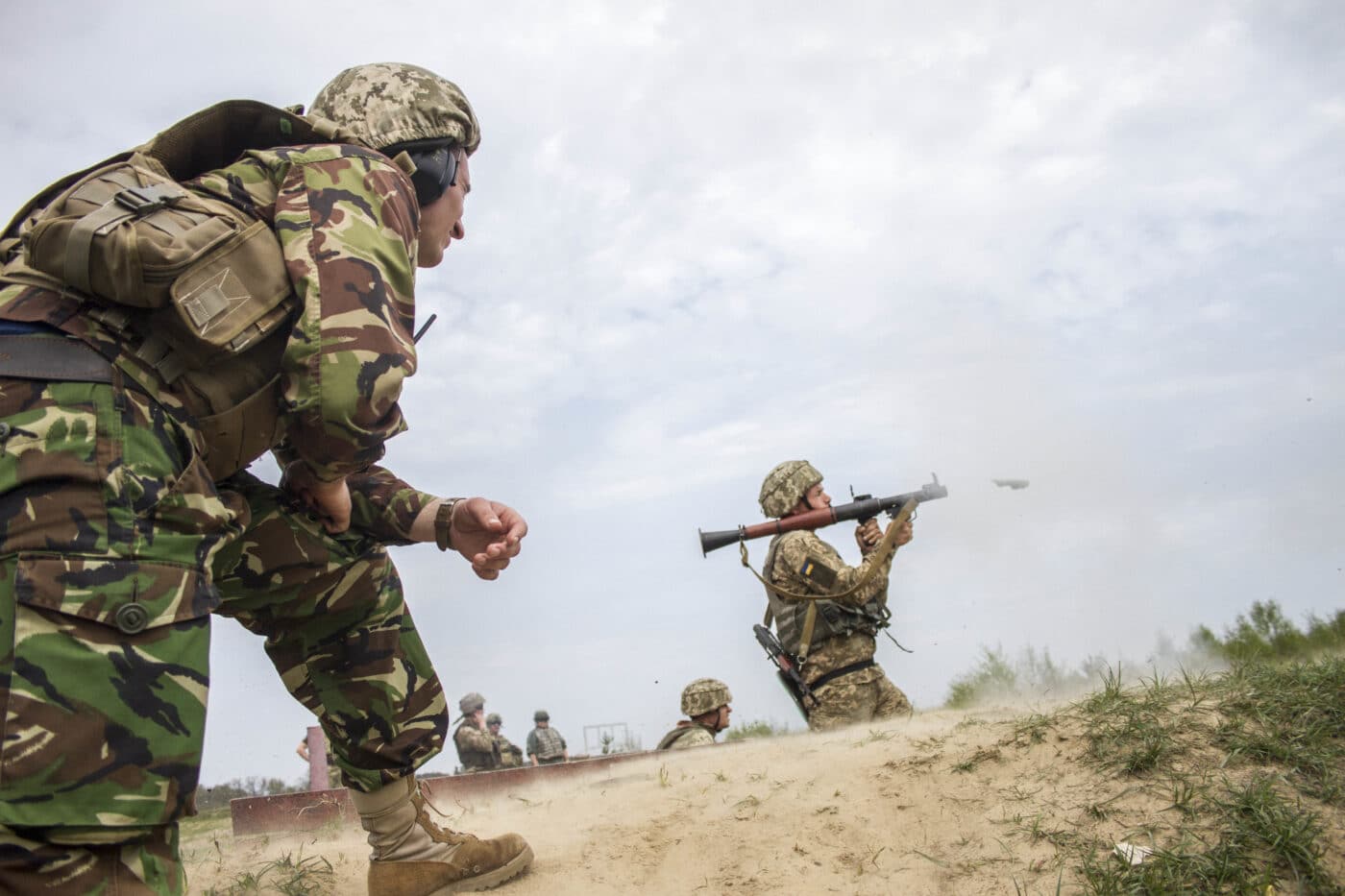
While that provided a noteworthy improvement in the weapon’s external ballistics, the big news was that the PG-2 grenade was capable of penetrating armor with a thickness of up to 7”. This made the RPG-2 such a success that it went on to serve not only the armed forces of the USSR, but also other communist bloc nations like the People’s Republic of China and notably the People’s Republic of Vietnam.
Moving Forward
Soon after the RPG-2 went into serial production in the mid-1950s, Russian ordnance engineers began refining the design. They rightfully recognized that the system needed greater stand-off reach so that opposing armored forces could be engaged at greater ranges. They also realized that the system needed to produce increased projectile velocity because that would reduce the target’s window of opportunity for performing evasive maneuvers. But since the RPG-2 was really just a grenade projector, it was not going to be possible to extract more range or velocity from the system without either increasing the power of the propelling charge or lightening the weight of the projectile.
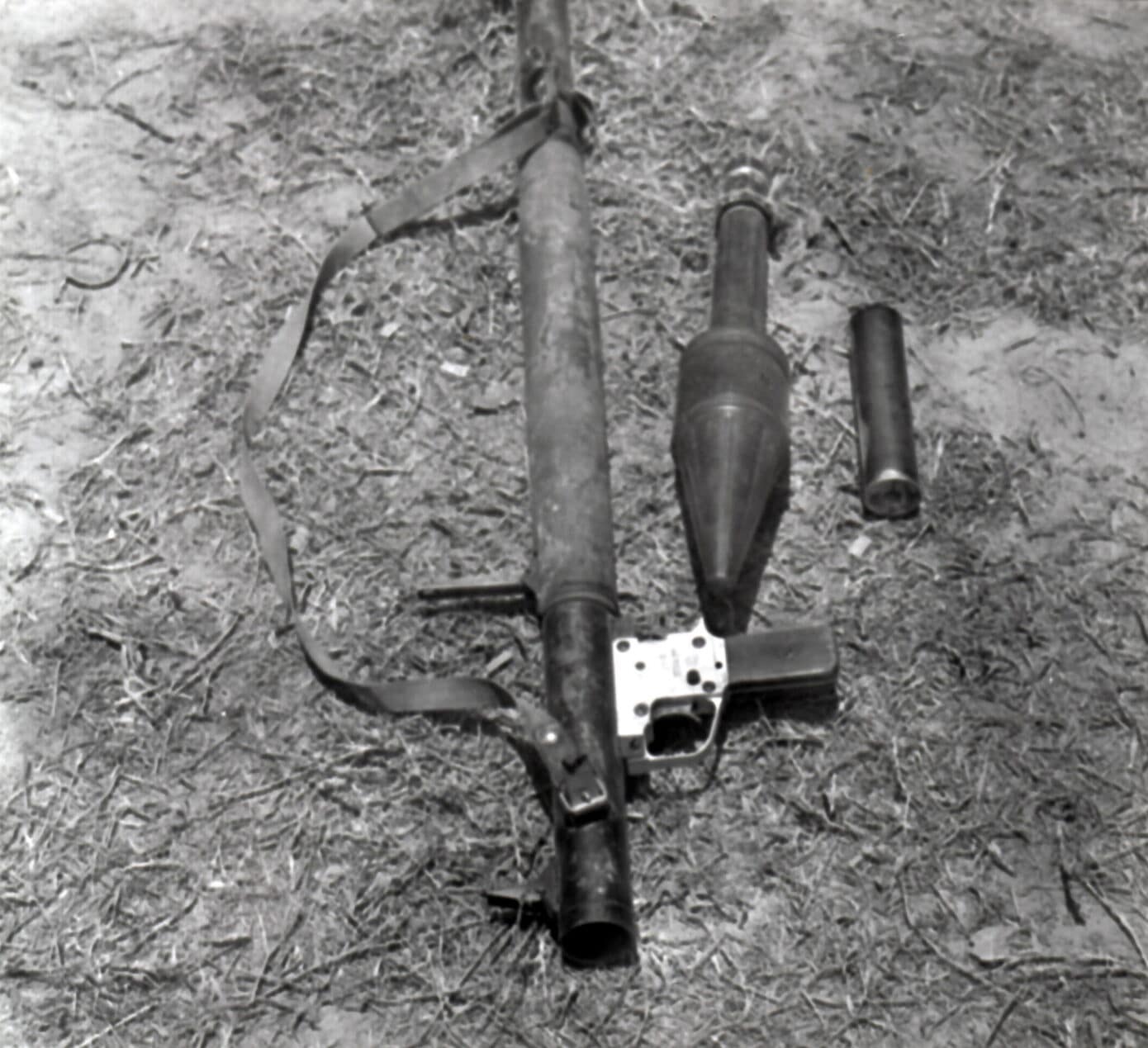
Toward that end, in 1958 the Russians began working on an improved system that incorporated rocket assist. Inspired by what the Germans had done with the Panzerschreck and what the Americans had done with the Bazooka, the Russians equipped a new 83mm diameter grenade with a rocket motor that increased effective range without having to change the projectile size and, therefore, armor-penetrating capacity.
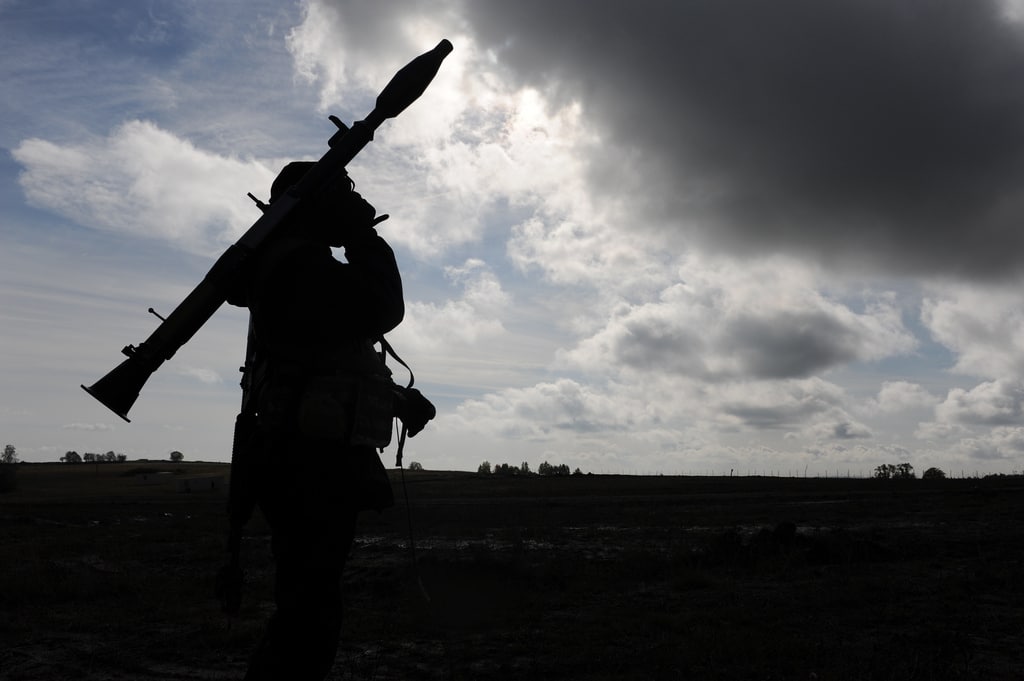
In addition to the improved rocket-assisted grenade, they also improved the design of the launcher’s tube by widening it to 45mm diameter and incorporating an expansion chamber, as well as a venturi and a divergent nozzle at its rear end. While these changes brought the weight of the launcher up to 10 lbs., the new features nevertheless provided the desired increase in velocity — an increase that doubled the weapon’s effective range to an impressive 1,000 feet. It received the designation RPG-4 and it passed field trials with flying colors in 1961, but it was not issued to the Soviet military in significant numbers because yet another variant with even better performance was about to be adopted.
Refining the Tools
For all of the RPG-4’s impressive capabilities, it was here one day/gone the next, and it functioned more as a proof of concept than anything. There was room for improvement in the design of the launcher’s expansion chamber, the venturi, and the nozzle, and the grenade’s anatomy also had to evolve because the engineers went back to a 40mm diameter launch tube. All of this design evolution eventually culminated in a weapon that rivals even the legendary Kalashnikov in terms of notoriety and mystique.
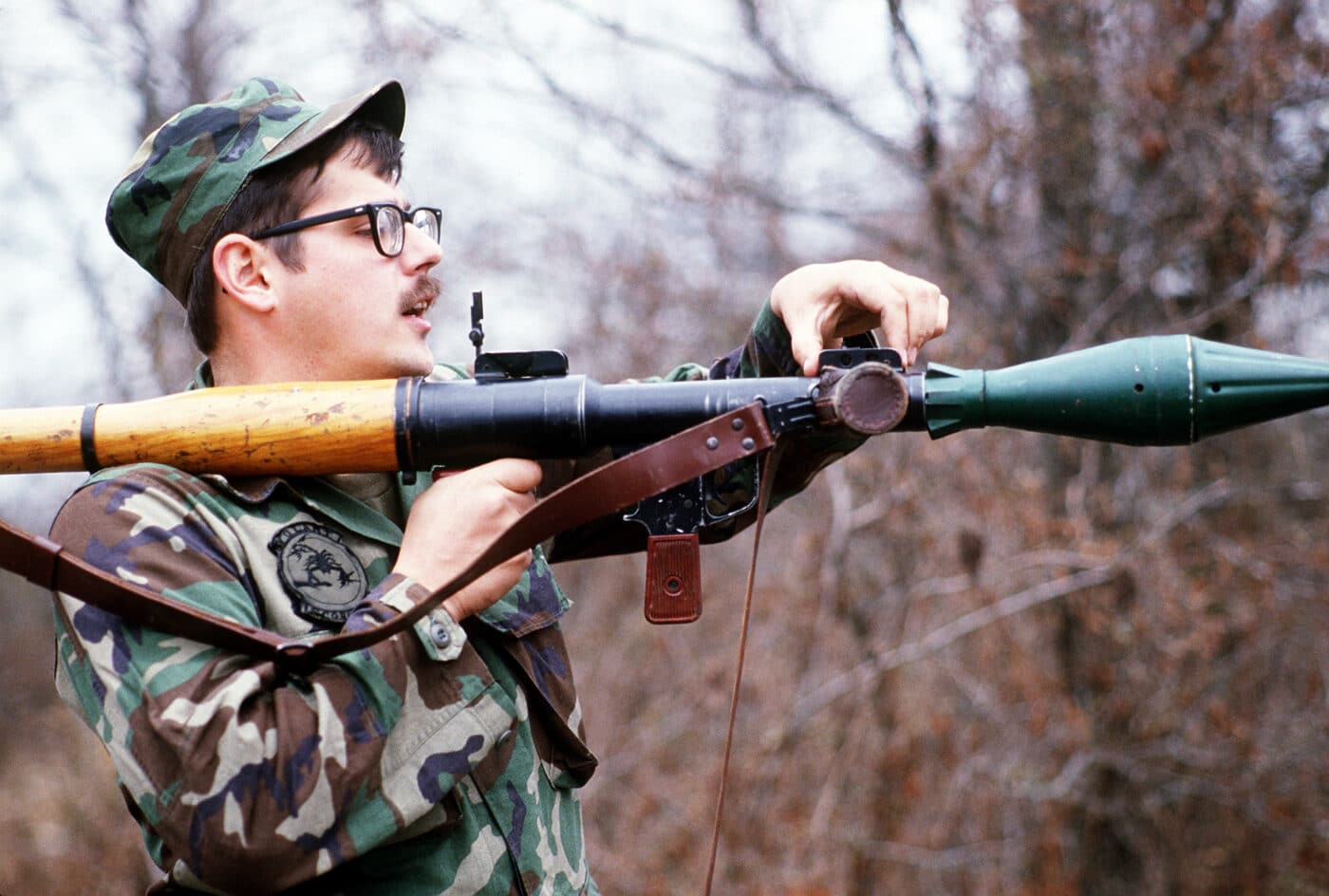
It received the designation RPG-7 and, since it entered Soviet military service 60 years ago, it has become a legendary and infamous source of battlefield firepower. It weighs 14 lbs., it is 37.5” long, and the area of its expansion chamber is covered by either wood or plastic insulation to protect the shooter from heat. The RPG-7 is equipped with flip-up sights, and the adjustable rear sight is graduated from 200m to 500m, but the weapon also has an accessory rail on the left side for mounting the PGO-7 scope. This 2.8x windage adjustable optic features a battery-operated illuminating ranging reticle that provides holdovers for calculating lead and bullet drop.
While the internal design of the launch tube of the RPG-7 is the product of some actual engineering sophistication, the weapon’s ignition system could not be simpler: a hammer strikes a firing pin that strikes a primer that ignites the gunpowder booster charge that propels the grenade out of the tube at 400 feet per second. After about 30 feet, the grenade’s rocket motor kicks-in and sustains flight with a velocity of 1,000 feet per second out to a maximum range of about 3,000 feet. The preliminary gunpowder booster stage is used because without it, the operator would receive the full backblast of the rocket motor.
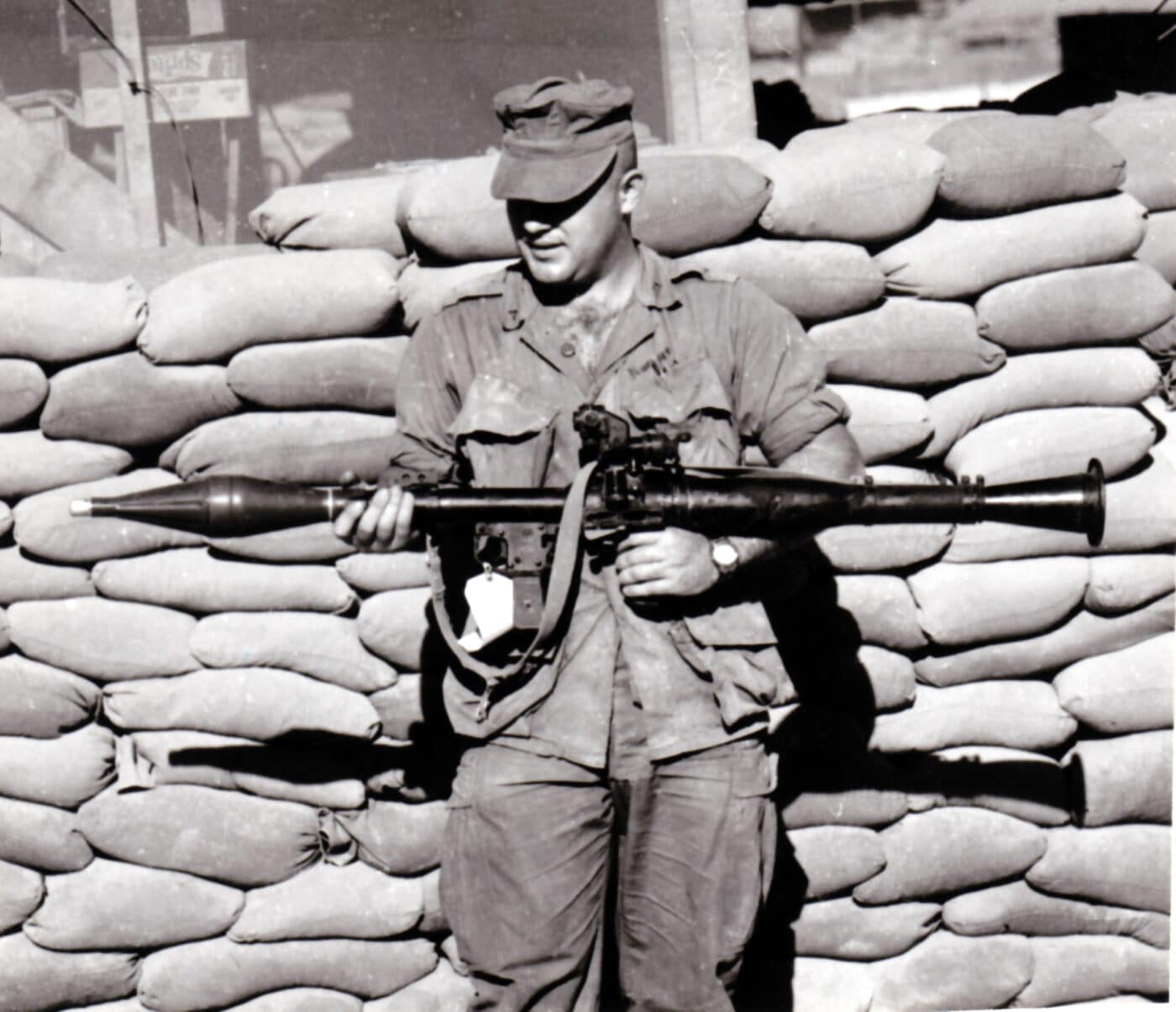
While several different grenade types have been introduced for use with the RPG-7 system during its six decades of service, the PG-7 high-explosive/anti-tank (HEAT) round is the most common. It is an 85mm diameter shaped-charge warhead weighing 5 lbs. that deploys four stabilizing fins in flight. The PG-7 remains inert and perfectly safe until it is subjected to the rapid acceleration of launch during which the warhead goes from 0 to 500 fps in the blink of an eye. Only those G-forces can initiate the sequence that ignites the sustainer motor and arms the shaped charge’s fuze.
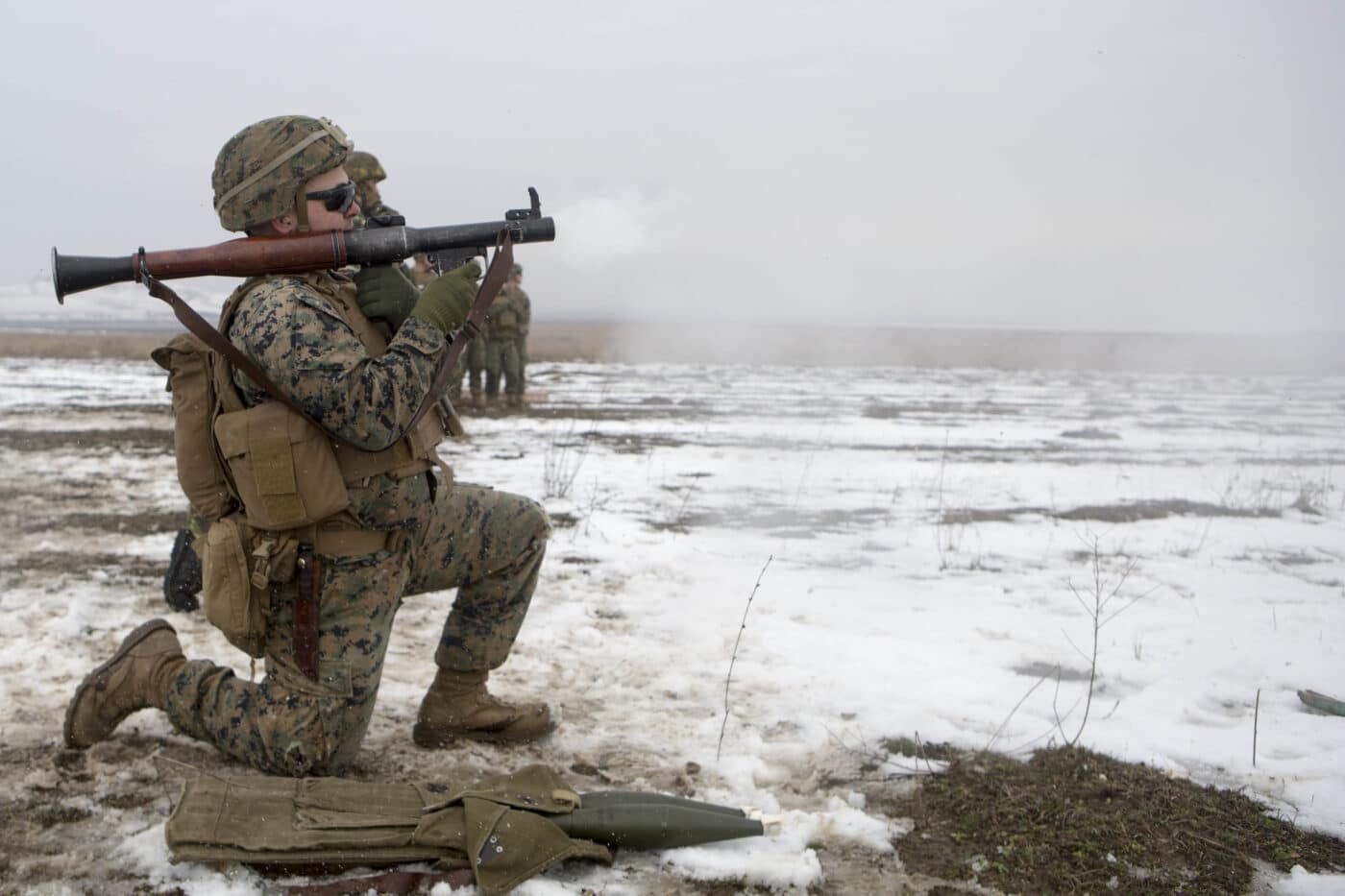
As an additional safety precaution, the PG-7 is also equipped with a self-destruct timer that will detonate the warhead after it has flown about 3,000 feet. Today, a variety of rounds are available for the modernized RPG-7 that provide greater performance than what was available back in the 1960s, and that includes a high-explosive/fragmentation round, a tandem high-explosive/anti-tank round for defeating modern reactive armor, and even a thermobaric anti-personnel round that produces a high volume, high pressure, high-temperature explosion that can be effective against opposing troops inside of structures.
In Use
The RPG-7 has been produced by nine countries and it has been used by more than 40. Since 1961, over nine million examples have been manufactured, making it the most ubiquitous anti-armor weapon there has ever been. From the Golan Heights to Huế’s Imperial Palace, from Mogadishu’s Bakaara Market to the streets of Marawi and Kyiv, the RPG-7 is one of the most successful weapons in the history of human conflict — right up there with the longbow and the trebuchet.
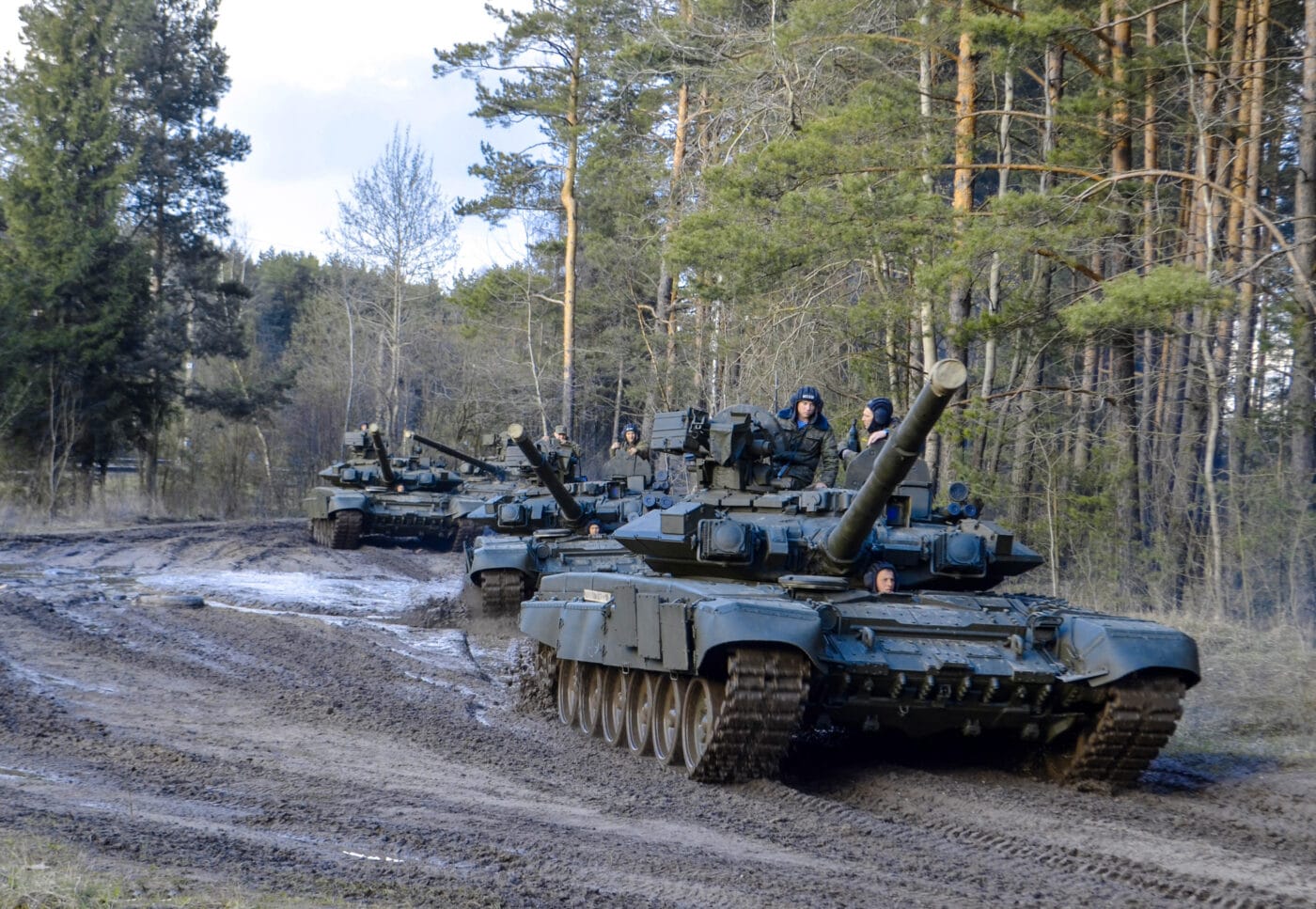
It has materially altered the landscape of contemporary ground combat and it does not seem to be anywhere close to the end of its service life. In fact, it is fighting right now as this article is being written. Although it may have been born of a need to knock-out NATO armor in a great Wagnerian Götterdämmerung in West Germany’s Fulda Gap during the Cold War, it is at this very moment being used by the Ukrainians to destroy vehicles belonging to the armed forces of the country that first created it.
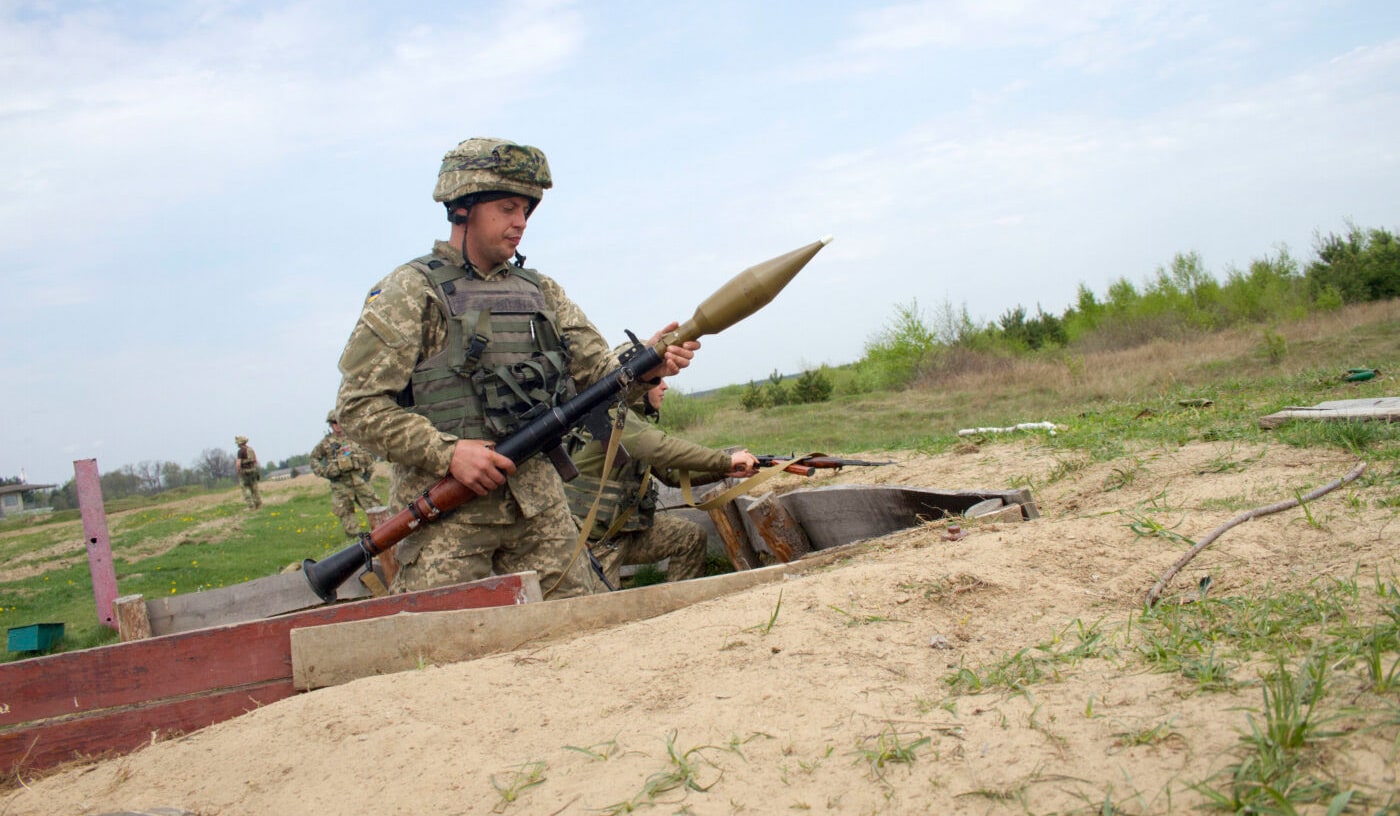
In what is perhaps the greatest irony of them all though, some of the examples of the RPG-7 fighting in Ukraine right now were made in the USA. In 2017, the Ukrainian military began purchasing examples of an RPG-7 clone from AirTronic USA of Spring Branch, Texas. It is designated PSRL-1 and, although it makes use of modern materials and features 1913 accessory rails, it is nevertheless capable of firing any of the PG-7 type grenades that might be encountered worldwide.
Thus, the RPG-7 lives on, albeit now with an American accent.
Editor’s Note: Please be sure to check out The Armory Life Forum, where you can comment about our daily articles, as well as just talk guns and gear. Click the “Go To Forum Thread” link below to jump in!
Join the Discussion
Continue Reading
Did you enjoy this article?

 666
666





